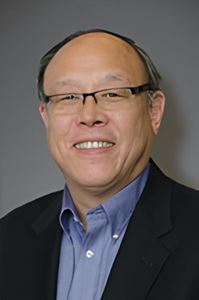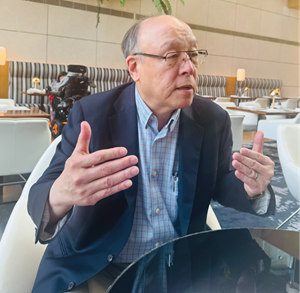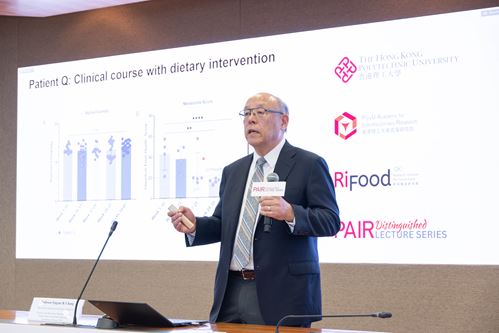This does not occur randomly, but rather is determined by co-evolution and co-speciation. In humans, microbiomes—defined as communities of microbes and the ecosystems in which they live—can be found in many parts of the body, including the skin, lungs and GI tract, the latter being the largest based on sheer numbers of cells and genetic content. Moreover, regional gut microbiomes provide functions that are vital for health such as protection against pathogens, nutrient digestion, immune development and maintenance, and regulation of host metabolism. When a host-microbe mismatch occurs, say, due to diet, antibiotics or faecal microbiota transplant, this disturbs the gut microbial ecosystem, resulting in a state called “dysbiosis” that can compromise host health and promote disease. Thus, the microbiomes of the GI tract are nurtured and maintained through resources (e.g., diet) and conditions (e.g., sanctuary from immune responses) that the host provides.
How do these tiny microbes in our GI tracts affect other parts of our bodies?
In the human body, if one organ goes wrong, the others are impacted. The gut-brain axis is a good example of this. Gut microbes produce bioactive molecules, which normally enter the bloodstream, pass through the liver and get detoxified. However, in the case of a disease called hepatic encephalopathy, which occurs when these molecules bypass the liver and are not detoxified, patients develop disorientation as well as motor and cognitive problems. When we put patients on antibiotics that affect the gut bacteria, these issues are cleared up within 24 hours. This is a solid demonstration of the functions of the gut microbiome. It has implications for Parkinson’s disease, since dysbiosis is often observed in the guts of these patients. Thus, the gut microbiome affects both our central and peripheral nervous systems.
Metabolism is another example. We know that there are people who can eat a lot and do not gain weight, whereas others are continuously dieting and fail to lose weight. We explain this by differences in their metabolism, although the scientific basis for these observations remains unclear. We believe that differences in the membership and function of an individual’s gut microbiome play an important role in regulating host metabolism. In a controlled animal experiment, mice that are fed a high-fat, low-fibre “western-style” diet will become obese. In contrast, germ-free (GF) mice that lack any microbes on the same genetic background, when fed the same diet, do not become obese. The restoration of a gut microbiome in GF mice, however, now renders them susceptible to the development of diet-induced obesity. These studies show that diet-induced changes in the gut microbiota play an important role in changing the host metabolism.
If scientists could identify the underlying mechanism, they would open up many possibilities for the management of numerous metabolic diseases including obesity, type 2 diabetes, metabolic syndromes and fatty liver diseases. This is particularly important in modern industrialised societies where diet-induced metabolic diseases lead to higher morbidity and mortality.
You work closely with the Research Institute for Future Food (RiFood) and serve as a member of the Institute’s International Advisory Committee. Can you share with us more about these collaborations?
Defining the state of health of the gut microbiome is a challenging and unsolved problem. Without this ability, it is difficult to determine the efficacy and impact of emerging microbiome-based interventions.
My team at UChicago has successfully developed technologies which enable us to quantitatively measure the functional profiles of the human gut microbiome. We are very interested in partnering with RiFood in applying our technologies to provide objective evidence for the efficacy of RiFood-led innovations. In this regard, RiFood has been forward-thinking in creating initiatives and programs to develop medical and functional foods that not only promote health in general, but also mitigate and treat diseases that have a microbial basis.
Aquaponic-related systems are another area of interest to us. During my stay here in Hong Kong, I was invited by the RiFood team to visit an indoor aquaponic system. It is an amazing automated monitoring system where many types of plants can be grown vertically in tight quarters in the absence of soil. This system provides a research opportunity for us to work with RiFood to determine how monitoring and optimising the microbiomes of the system can yield bigger and more nutritious plant-based foods. There are different microbiomes throughout the system. In one section, live fish provide fertiliser materials that are converted to nutrients by microbes, which in turn are used by the plants. This system is therefore designed to create a symbiotic and mutualistic ecology. If we are able to apply UChicago-developed tools to study the system’s microbiomes, it should be possible to enhance and increase the nutritional value and production of sustainable, effective foods. We hope that UChicago and RiFood will have the opportunity to collaborate with the aquaponics company to further this technology.
Collaboration, be it across disciplines or across organisations, is important in developing impactful research solutions. How can we ensure that collaborative efforts are effective and successful?







